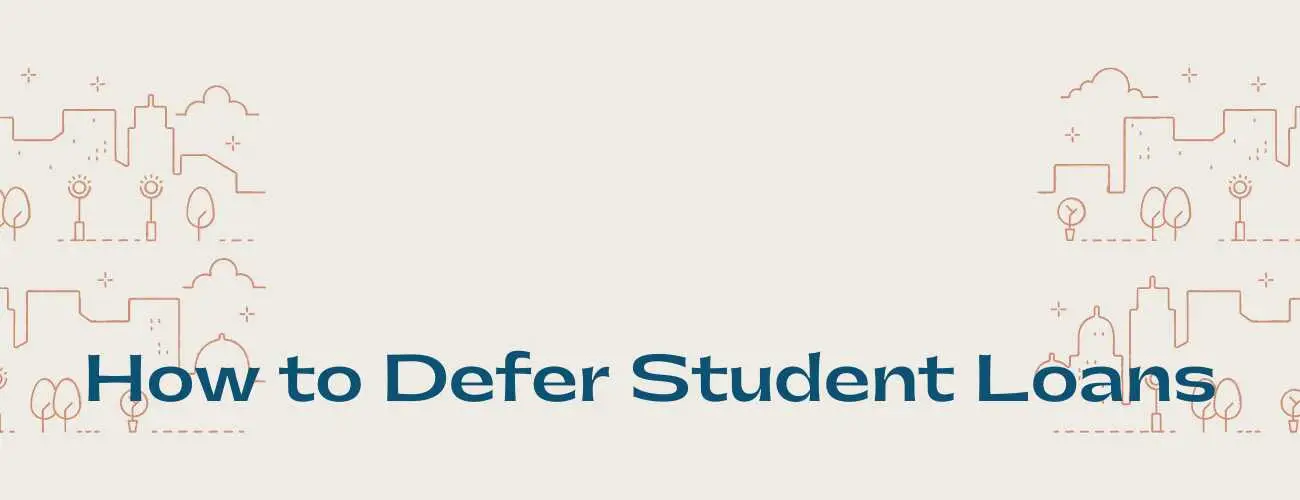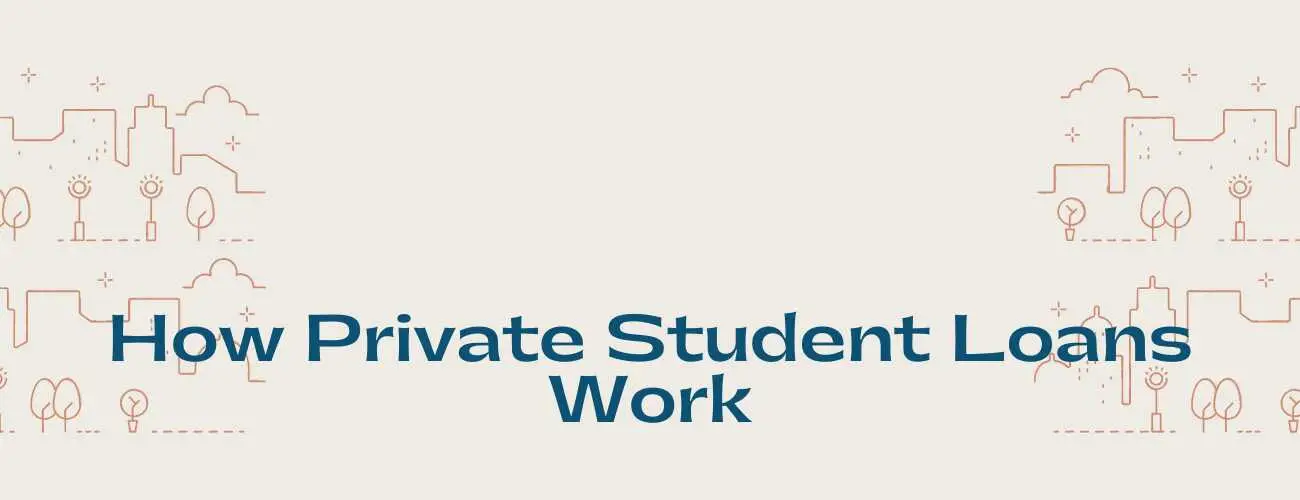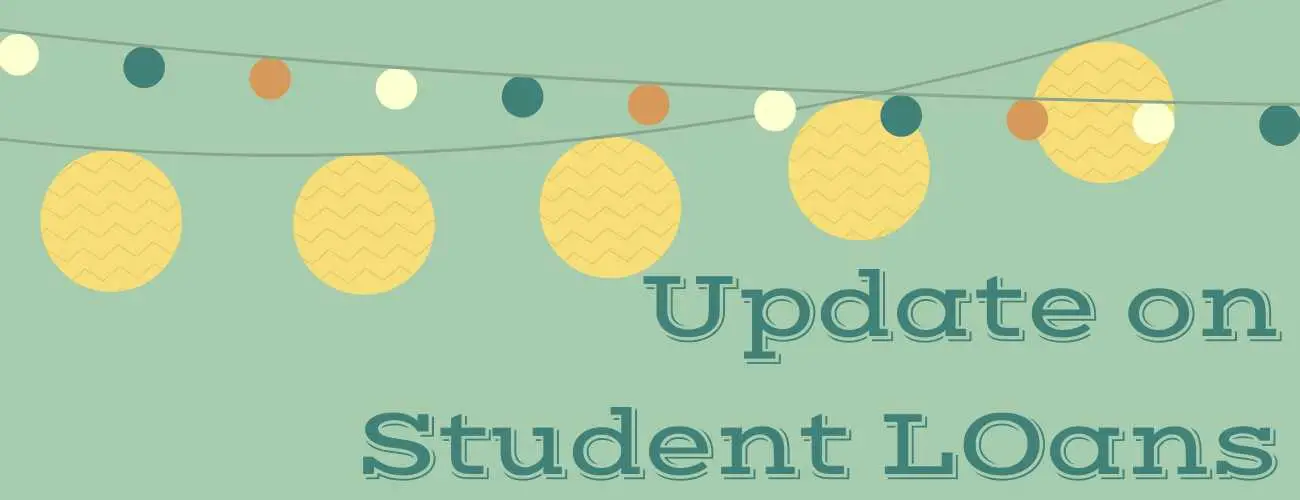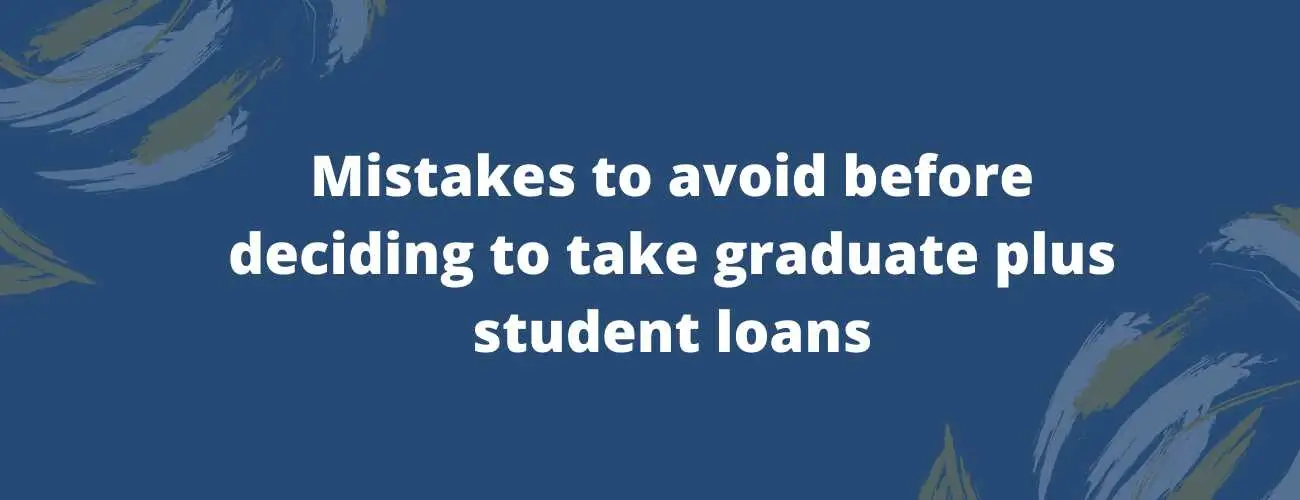What are Parent PLUS Loans?
Don't have enough funds to send your child to college? Apply for Parent PLUS Loans with the fixed interest rates and flexible loan limits. Read more about the features, repayment plan and terms of Parent PLUS Loans.
Updated by Theres Ann on 28th July 2020
Parent PLUS Loans are usually borrowed by parents of dependent undergraduate students, so as to help the children pay for college or career school. A fixed interest rate and a flexible loan limit are granted to the Parent PLUS Loan borrowers. If the child exhausts eligibility for Direct Loans first, as the student loans have lower interest rates and fees.
Parents of dependent undergraduate students receive a parent PLUS Loan. A 7.6% interest rate is received for the 2018-19 school year and the flexible loan limits. A parent can’t have an adverse credit history to be eligible for this type of loan. For loans that were disbursed on or after Oct 1, 2018, and before Oct 1, 2019, a 4.248% origination fee is charged.
These federal loans are borrowed by some parents, to make sure that too much student loan debt is not taken by the children. Nothing can stop parents from helping their children with student loan payments. It is better to borrow Direct Loans before the Parent PLUS Loans.
Table of contents
- Application Process of Parent PLUS Loan
- Signing the Master Promissory Note
- Guidelines
- Increase in the Loan Limits for a PLUS Denial
- Additional Requirements
- Interest Rates and Fees
- Repayment Options
- Deferment and Grace period
- Consolidating PLUS loans
- Denial and Refund
Parent PLUS Loan Application Process
The initial application process involves filing the FAFSA at the FAFSA.ed.gov. In order to borrow from the Parent PLUS Loan program, FAFSA is a requirement.
In order to obtain a Parent PLUS Loan, a loan is requested at the studentloans.gov. The financial aid office at the student’s college or university is also contacted. Some of the steps for your Parent PLUS Applications are as given below.
1) FAFSA filing and Student Aid Award Review
The free application for Federal Student Aid can be filled with your child. The information from this packet determines the need and eligibility for financial assistance to pay for college.
As an initial step in filling out the FAFSA form, you can create an FSA ID. You need to remember your FSA ID, as you’ll need it when the Parent PLUS Loan Application is submitted. Once the FAFSA is submitted and processed, you’ll receive a Financial Aid Award Summary.
The Financial Aid Award Summary contains the details of all the financial aid that is awarded to your child. In order to find out if you have received the Parent PLUS Loans, you can verify the list of financial aids from your Financial Aid Summary.
2) Determine if you are eligible for a Parent PLUS Loan
Eligibility requirements for Parent PLUS Loans can be qualified to see if you qualify for Parent PLUS Loan. Some of the criteria to receive a Parent PLUS Loan are as given below.
-
You should be a biological or adoptive parent of the current student
-
Your child must be a dependent undergraduate
-
Eligibility requirements for you and your child must be met for Eligibility requirements for federal student loans
-
You should not default on federal student loans
-
Your credit must not include current delinquency of 90 days or longer. The other Best Federal Student Loans do not have any credit requirements and this makes the Parent PLUS Loans stand out of the other loans.
3) Find out the amount that you can borrow
A loan amount on the parent PLUS Application should be indicated. The amount you borrow with Parent PLUS Loans depends on the cost of attendance at your child’s college.
-
The college determines the cost of attendance and is set to federal loan limits on Parent PLUS Loans
-
A Parent PLUS Loan amount can be borrowed to the remaining cost of attendance after the financial aid has been applied
-
It can help to get in touch with your student’s college. The financial aid office determines the eligibility and limits on Parent PLUS Loans.
Moreover, the Parent PLUS Loan Application can vary from one school to the other. Parent PLUS limit is set according to your child’s cost, and not the financial situation.
4) Complete a Parent PLUS Loan Application
You can start a Parent PLUS loan application, once you know the amount that you need to borrow. You can apply for a Parent PLUS Loan through StudentLoan.gov.
Some schools may have a different process for additional information for processing Direct PLUS Application.
5) Provide loan and identification details
The Parent PLUS Loan application is a request for supplemental information. The information you provide includes loan details, academic information, student information, borrower information, and employment information.
The type, loan amount and period of repayment are included in the loan details section. The address and code of the child’s college and the award school year are included within the academic information.
The child name, social security number, date of birth, permanent address and telephone number is included within the student information section.
Borrower information includes the name, social security number, date of birth, citizenship status, permanent address, mailing address, phone number, and email address.
The employer name and address is included in the employment information.
6) Choose your disbursement and deferment preferences
You can choose from a variety of options on how to make Parent PLUS Repayments. Some of the choices are as given below.
-
You can choose whether to defer Parent PLUS Loan Repayment – Automatic deferment of parent PLUS Loans do not happen while your child is still in college and for the half-year grace period that is followed later on.
-
You can choose to begin repayment immediately, or make a deferment until your child graduates or leaves school.
-
Parent PLUS Loans are granted to the Financial Aid office of the school and used to pay off tuition, fees, room, board, library fines or campus parking tickets.
-
The amount that remains after paying off the educational cost is known as the credit balance.
-
The person to whom the credit balance has to be paid out (parent or student) is specified along with the Parent PLUS Loan Application.
Submission of Parent PLUS Loan Application
The Parent PLUS Loan Application can be submitted along with the FSA ID. This triggers an immediate credit check, to see if you have adverse credit.
The application will be sent to the financial aid office of your child’s college if you do not have a credit issue. But you can become eligible if you complete PLUS Credit Counseling and obtain an endorser or a document.
The same format of application can be used in the case of a Parent PLUS Application in the future.
Signing the Master Promissory Note
After the Parent PLUS Application is submitted, the financial aid office of the college processes it, determines your eligibility and notifies you upon approval.
The aid office can be contacted to check the progress of your application.
The final step in the completion of a Parent PLUS Loan Application Process is the signing up of a PLUS Master Promissory Note.
Two references on your MPN includes people who live at two different US States, people who do not live with you and people who have known you for at least three years.
Full name and contact information are listed for each reference. Schools participating in Direct Loan Programs makes the Direct PLUS Loans to eligible programs.
You can still have a Parent PLUS Loan if in case you have an advance credit history. Parent PLUS Loans can be received in any of the following situations.
You can obtain an endorser who does not have an adverse credit history. An endorser agrees to pay your Parent PLUS Loans if in case you do not repay it. The endorser cannot be the child on whose behalf you are borrowing. The extenuating circumstances that relate to the adverse credit history.
Guidelines to be followed
The instructions to be followed while applying for a Parent PLUS Loan is given below.
-
The parent who completes and signs the Master Promissory Note should request the loan.
-
The loan request should only be made by the parent and not the student.
-
FSA ID that was used to sign the FAFSA should be used to sign the loan.
Parent PLUS Loan Eligibility
Only the parents of dependent undergraduate students only are eligible to receive the Parent PLUS Loans.
Independent undergraduate students are not eligible for Parent PLUS Loans.
If in case, the dependent student’s parents are divorced, both of them can separately apply for student loans, with a separate Master Promissory Notes. However, the loan limits cannot be exceeded by the combined Parent PLUS Loans.
Who can borrow the loan?
Only a biological or Adoptive Parent, step-parent (as long as he/she is married to the student’s parent), is eligible to borrow from the Parent PLUS Loan Program.
Credit Requirements for a Parent PLUS Loan
The borrower’s credit scores or debt to income ratios does not affect the eligibility of a Parent PLUS Loan. The borrower of a Parent PLUS Loan must not have an adverse credit history.
What is an adverse credit history?
An adverse credit history occurs in the following cases -
-
Delinquency of more than 90 or more for a sum of more than $2,085 in total debt.
-
More than $2,085 in total debt in collections, or is charged off in the past two years.
-
Foreclosure, repossession, tax lien, default, bankruptcy discharge, wage garnishment or write-off of student loan debt in the past five years.
Increase in the Loan Limits for a PLUS Denial
In some cases where the parent is denied a Parent PLUS Loan, the student can still apply for a Direct Unsubsidized Loan, available to independent students.
-
For the 1st and 2nd year, $4000 and higher is granted
-
For the 3rd year and beyond, $5,000 and higher is granted
-
The aggregate limit is $26,500 or higher
If any of the parents, later on, qualify for a Parent PLUS Loan, the student loan limits return to the dependent student level.
Additional Requirements
Eligibility criteria have to be met both by the student and the parent in the case of a Parent PLUS Loan. Some of those requirements are as given below.
-
Students must be enrolled in at least half the time basis.
-
Male students between ages 18-25 should have registered with the Selective Service.
-
Students and parents must either be US Citizens, or nationals, permanent citizens or eligible non-citizens.
-
Students and parents can’t default on a Federal student loan.
-
Parent PLUS Loan proceeds must be used for educational purposes.
Parent PLUS Loan Limits
When the other financial aid is subtracted from the full cost of attendance, then the annual loan limit is received.
The cost of attendance includes tuition and fees, room and board, books, supplies, equipment, transportation, and other miscellaneous personal expenses.
Interest Rates and Fees
Interest rates on Parent PLUS Loans are fixed and do not change over the life over the loan. The interest rate for 2018-2019 is 7.6%. Interest Rates are based on a 10-year treasury note along with a fixed margin. 10-Year Treasury + 40.60% interest rate formula.
The interest rate cap is 10.5%. If the borrower does not pay the interest of the loan as it accrues, it will be capitalized and thus increases the size of your loan.
The origination fee on Parent PLUS loans is 4.248%. The fee is deducted from each loan reimbursement.
The borrower can approach the financial aid office of the college in order to increase the amount that is borrowed to cover up your fees, in order to reach the annual loan limit.
Parents can deduct up to $2,500 per year in interest paid loans, through student loan interest-reduction. The deduction is an above-the-line exclusion from income and can be claimed even if the parent does not itemize on his or her federal income tax return.
The costs and benefits of PLUS Loans and Private Student loans should be compared by parents. A parent with excellent credit qualifies for private student loan interest rates than the current PLUS loan interest rates.
Parent PLUS Loan Repayment Options
The repayment term on Parent PLUS Loans is 10 years. Borrowers can, however, qualify for longer repayment term if the loans are consolidated or have more than $30,000 in federal student loans.
Standard Repayment, Extended Repayment, and Graduated Repayment are the eligible Repayment Plans under the Parent PLUS Loan Repayment Program.
Suitable benefits and plans
Income Contingent Repayment is not granted until Parent PLUS Loans entered repayment on or after July 1, 2006.
The Direct Consolidation Loan is then eligible. Income-Based Repayment, Pay As You Earn Repayment, Revised Pay As You Earn Repayment are not granted under the Parent PLUS Loan Repayment.
Public Service Loan Forgiveness is not granted for Parent PLUS Loans until the loans are consolidated and are repaid under the Income Contingent Repayment Plan.
As the borrowers are different, consolidation of Parent PLUS Loans and Federal Student Loans is not possible.
Consolidation and other advantages
Parents can consolidate their personal federal loans with the Parent PLUS Loans as both of these have the same borrower.
Parent PLUS Loan is canceled in case, the borrower becomes totally and permanently disabled if the borrower dies or the student dies.
Some of the recommendations to be followed are as given below.
-
FAFSA is filed every year in order to maintain the eligibility for student aid.
-
Dependent students must first make use of Direct Subsidized Loans, Direct Unsubsidized Loans, and Perkins Loans before letting the parents consider Parent PLUS Loans.
-
The costs and benefits of Parent PLUS Loans and private student loans. Parent PLUS Loans and private student loans can be compared. Parents with excellent credit can easily qualify for private student loan interest rates that are lower than current PLUS Loan rates.
-
If a PLUS Loan is denied due to adverse credit history, the student can approach the school’s financial aid office in order to request a higher limit on Direct Unsubsidized Loan.
Terms of Repayment
The normal repayment begins no later than 60 days after the loan is fully disbursed.
Repayment deferment is possible on loans that were disbursed after July 1, 2008, while the student is in school and during a six month period after the student graduates.
Parent PLUS Loans can be deferred while the borrower is enrolled in a half a time basis in an eligible program and during the 6 months period. Interest, however, accrues even during the deferment periods.
Deferment and Grace period for parent plus student loans
Parent PLUS repayments start immediately after the loans are disbursed. Therefore deferment can be applied 60 days after loans are disturbed so that you can manage the funds required to start your repayments. The Borrowers can defer repayments on or after July 1, 2008, while the student is still studying. When the borrower is the parent of a student, enrolled on a half time basis is eligible for 6 months grace periods. Though the principle amount can be delayed from being paid, 6 months of interest rates will accumulate over time.
Consolidating PLUS loans
Be it the private or federal loans, you can consolidate them if you want to reduce your debt. It also helps you to manage your finances effectively. Consolidating federal loans are free. After the consolidation process, a fixed rate of interest is provided and if you had multiple loans, they are all consolidated to a single loan. Consolidating also has benefits like access to forgiveness programs, easy credit checks performed while applying for loans and better repayment plans. Consolidation for parent plus loans is possible if the parent does not hold an existing parent plus loan. And the repayment can extend up to 30 years.
Denial of Parent PLUS Loan and Refund
Denial
If in case the Parent PLUS Loan is denied, a credit-worthy cosigner called endorser can be found out in order to guarantee.
The Electronic Endorsement Addendum Section of the loan application is completed by the applicant.
The PLUS credit counseling and a PLUS Master Promissory Note should be completed by the parent.
The rejection of your application can be appealed. This would give you an insight into what silly circumstances led to the rejection of your application. The PLUS Credit counseling needs to be completed by the parent and they should also fill in a PLUS credit counseling.
If your application is rejected, you can apply for Federal Direct Unsubsidized Stafford Loan.
The student can borrow $4,000 to $5,000 annually under the project and $26,500 can be added in pursuit of a degree. These same limits are available even to independent students.
Refund
If all the money credited through PLUS Loan is not required, then the balance can be credited to either the student or the parent.
The person who should receive the unused balance should be designated at the time of application.



93.jpg)


28.jpg)
